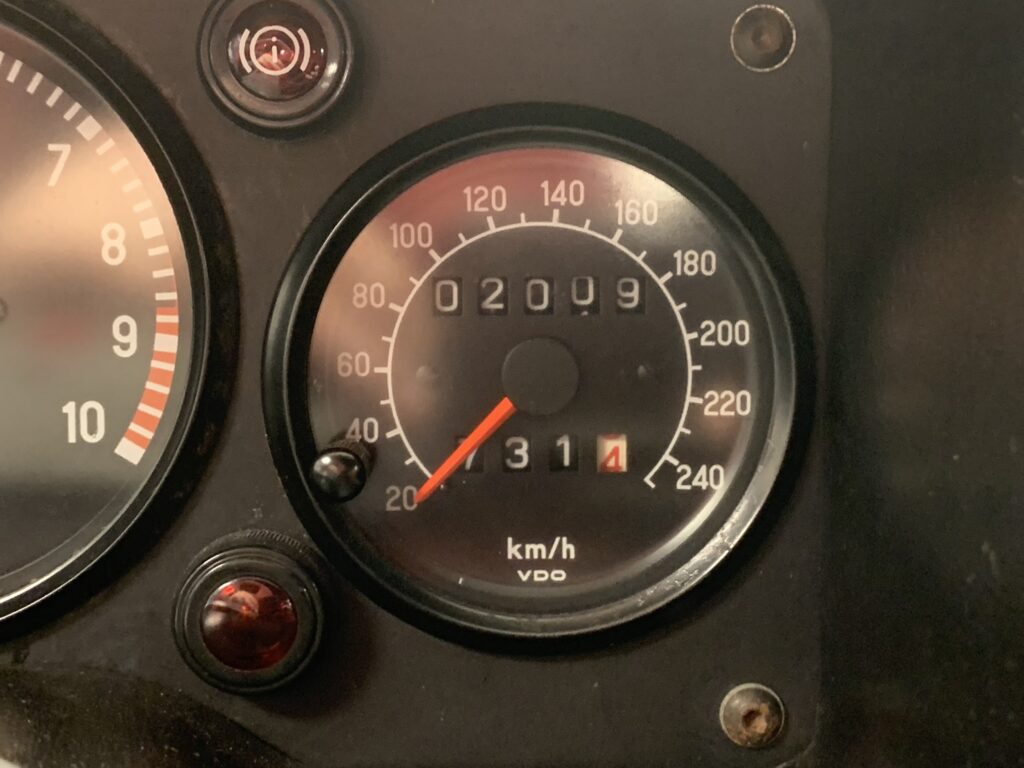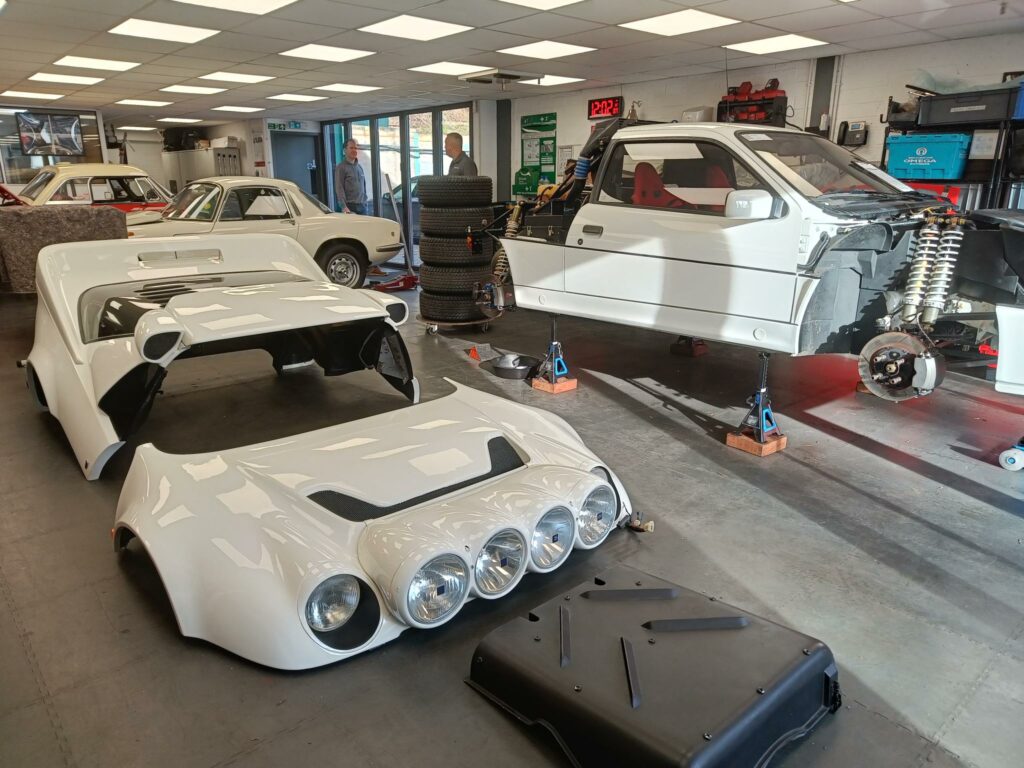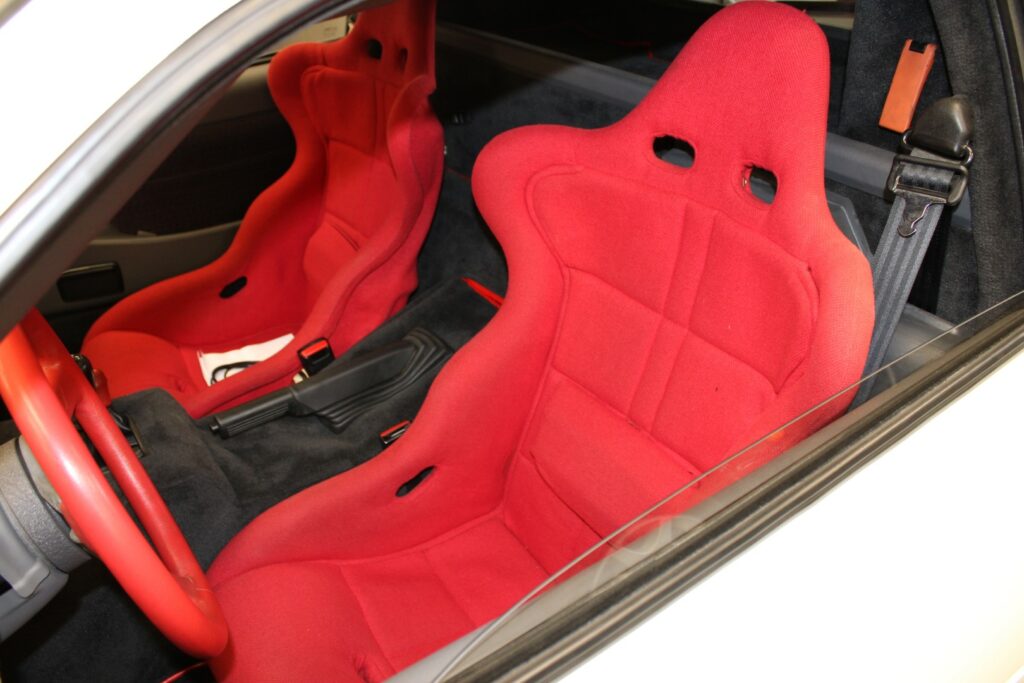Few cars have captured motor sport fans’ imagination like the Ford RS200. This glassfibre-bodied, mid-engined missile was conceived 40 years ago with a singular aim: to conquer the iconic Group B era of the World Rally Championship. To achieve such a lofty goal, Ford’s pugnacious pretender would have to beat the likes of Audi, Lancia and Peugeot at a time when the WRC was the biggest motor-racing series on the planet.
But Ford already boasted a stellar reputation in the rough-and-tumble world of rallying. Since its 1967 debut, the Escort had dominated the sport, clinching eight British Rally Championships, two WRC Drivers’ titles, and a Manufacturers’ title. In 1984, the RS200 seemed destined to continue the Blue Oval’s legacy of success.
Ford capitalised on a regulatory loophole with the RS200 – one that, surprisingly, its rivals had overlooked. While Group B rules mandated the production of 200 road-going homologation cars, Ford took a unique approach.

Group B's ban after 1986 – the RS200's debut year – left its true capabilities untested


Unlike Audi and Lancia, who based their monstrous machines on ordinary road cars, Ford purpose-built the RS200 from the ground up. Needless to say, this rare, competition-bred machine looked and performed like no road-going Ford ever created before.
So it’s unsurprising that, even four decades later, a gleaming 1986 RS200 S was constantly encircled by smartphone-wielding admirers at Bicester Heritage’s most recent Sunday Scramble. Despite the Ford being placed alongside all manner of shinier and more modern machinery – including six GMA T.50s – people couldn’t help but be drawn in by its scoops, spoilers and quad-pod spot lamps.
Although appearing freshly restored, this pristine RS200 S remains entirely original, save for an updated ECU. It was being showcased by Tolman Engineering – purveyor of the boisterous Peugeot 205 GTi Tolman Edition Restomod. Although unrestored, the car did have to be completely recommissioned by Tolman Engineering after languishing in storage for nearly four decades.

The result of the car’s long slumber is that it had a mere 1200 miles on the clock when it was purchased by its current owner at auction in 2023. “It’s obviously very, very low mileage, and really that has been the huge challenge that we’ve had to deal with for this recommission,” explained Tolman Engineering CEO Chris Tolman. “It was purchased by a good client of ours who is a bit of a Ford fanatic, and it came at auction for the right money,” he continued.
“Ultra low-mileage is a bit of a double-edged sword when it comes to old cars. On the one hand they’re obviously very original and nothing is worn out, but a car that has been sitting for 40 years also brings its own issues.”
These problems became immediately apparent as soon as the car arrived at Tolman’s HQ in Warwickshire in March 2023. “It was sold as a running car. The battery was flat, but I managed to get it started and drive it onto the trailer so that we could transport it to our workshop. Once we got it back, it immediately began to haemorrhage fluids. It became obvious that the car had never had never even had an oil change.”

Chris then realised that the entire car would have to be dismantled and rebuilt if the new owner was ever going to enjoy his purchase as he intended – from the driver’s seat. “It was obvious that the entire car needed to be completely recommissioned, but not restored – it’s just too original.”
The recommissioning approach was a departure from the projects Tolman engineers usually embark upon. Earlier this year, for example, the firm revealed a time-warp Ford Escort XR3 restoration in which even the original dealer stickers were reproduced and the paintwork in the heater controls and instrument cluster were fastidiously refinished in precisely the right colour.
“Our guys want to do the absolute perfect job with absolutely everything we do,” Chris explained. “And, for that reason, they sort of hated the idea of doing a recommission and they would say things such as ‘this needs to be painted’ or ‘this needs to be powder coated’. But everything had to remain as original as possible.”

The lengthy process of dismantling the machine revealed the sheer scale of the task at hand. “Every rotating seal and rubber pipe needed to be changed, and the aluminium water pipes had corroded because they had just been sitting with water in them. The air filter was literally falling apart, and the rubber bump stops in the dampers had totally disintegrated, so they had to be sent back to Bilstein to be rebuilt.”
With the car disassembled and most of the underlying issues diagnosed, the restoration team sent the turbocharged 1.8-litre Ford-Cosworth powerplant off to an engine specialist for closer inspection. “The motor was originally built in Daventry – the label is still on it. We sent it to a marque specialist because it has everything at its disposal. It replaced the cambelt and rebuilt the oil pump because it was leaking, while the inside of the engine was checked with a borescope. Luckily everything was fine.”
After the engine had been given a clean bill of health, Chris’s team made subtle modifications to enhance reliability and driveability while preserving as much originality as possible. “We took the decision to convert it to a modern fuel-injection system, and we also changed the flywheel for one with a pick-up coil that the later Evo car had,” Chris explained.

“The distributor was also changed for one that becomes a cam trigger. The only other things that we added were an exhaust-gas temperature sensor, a Lambda sensor and a knock sensor. It’s all about protecting the engine.”
These modifications were complemented by a modern fully electronic ECU in place of the archaic 1980s version. “The original ECU was very basic, so we put that in a box with its loom and installed a modern one that has all the sensors on it. It’s much safer for the engine because it won’t let it start unless it sees the right amount of oil pressure. We can programme it to limit revs until the engine warms up.”
Despite these changes, the car’s performance doesn’t deviate from the original spec sheet. “The RS200 was supposed to have 350bhp and we dynoed this one at 330bhp. With more boost it starts blowing the spark out – but the biggest power restriction is the exhaust system. So did they ever have 350bhp? Definitely not – but God is it fun!” Chris laughed.

“After the new ECU was installed I went and drove the car for the first time. I was expecting it to be a bit agricultural to be honest – but it drove beautifully. It’s so much fun, there’s lots of boost and very short gear ratios, it just makes you giggle like a schoolgirl. And people just love it when they see it out on the road; they generally get very excited and start grinning and gesticulating wildly.”
It was at this point that Chris offered to take Magneto for a very special passenger ride. The RS200 cockpit is notoriously snug and the fixed-back bucket seats were certainly a tight fit for my six-foot frame. Much of the interior trim is borrowed from 1980s Ford parts bin and will be familiar to anyone who has spent time in a Sierra of the period. The overall impression is function over form, which is entirely appropriate for a Group B homologation special.
The 1.8-litre four-cylinder fired with a cacophonous bark before settling into a gruff idle. The entire car vibrated, accentuated by whirring driveshafts criss-crossing beneath the floor. At low speeds, the clutch proved finicky, the RS200 jerky and recalcitrant – trademark trait of competition machinery.

Once out on the open road, Chris buried the accelerator pedal. The car squated and the turbocharger whistled loudly as it shoved air into the combustion chamber and I was pinned to the backrest of my bucket seat. The powertrain’s roar, mere inches behind, reverberated through my body – it was a raw visceral experience and exactly what you would expect from a car such as this.
The most impressive thing from the passenger seat, however, was the suppleness of the ride. With two long-travel dampers at each corner, the RS200 seemed to simply float over whatever a UK B-road could throw at it. Potholes and crests were almost unnoticeable.
This brief passenger ride certainly hinted at the RS200’s competition-car potential. However, as fate would have it, we’ll never know whether this was a machine that could have risen to the very top of the WRC.

Group B’s ban after 1986 – the RS200’s debut year – left its true capabilities untested. That year saw both promise and tragedy: a third-place finish in Sweden, followed by a devastating accident in Portugal that claimed three lives.
It’s ironic that the RS200 holds such iconic status after such a brief and unsuccessful WRC career. “Many believe the RS200 would’ve dominated had Group B continued. I’m not so sure,” Chris mused.
One certainty remains: few competition cars have captured imaginations like the RS200. And the crowds at Bicester stand as testament to that.




